Creating healthy spaces
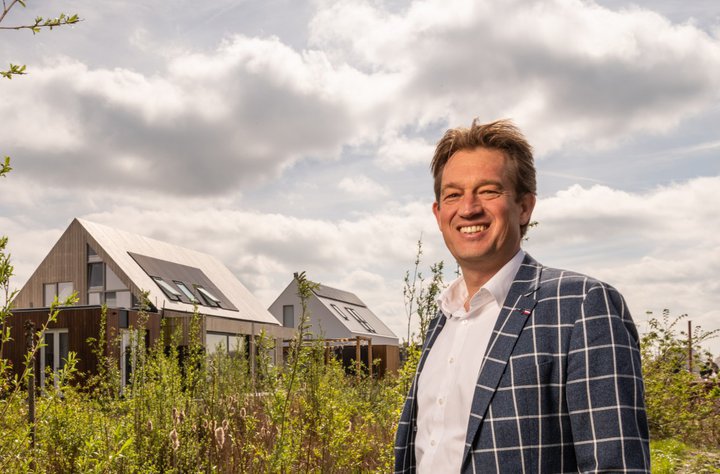
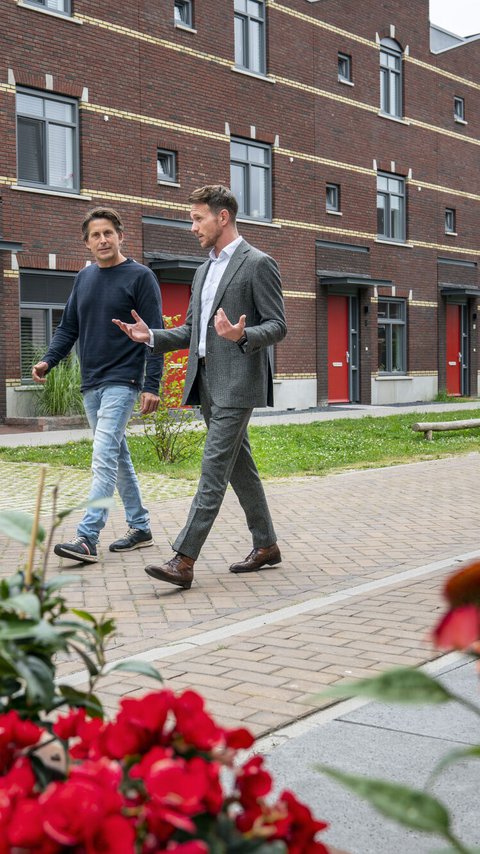
Ideally, you need to safeguard nature right at the start of an area development. This is the only way to take advantage of all the opportunities to boost biodiversity and make an area integrally climate-adaptive, say NL Greenlabel and Heijmans. They also managed to make room for green and blue well into the planning phase of Land van Dico. Heijmans Developer Robert-Jan van Gerven shows NL Greenlabel’s Lodewijk Hoekstra and Steven Kamerling how their plans turned out.
Blossoming flowers, buzzing bumblebees and old oaks define the picture in the Land van Dico neighbourhood in Uden, North Brabant. Once upon a time, it was shed roofs, chimneys and plumes of smoke, when this place was home to the Dico bed factory. All this urban nature is the result of a major redevelopment, started ten years after the company closed. Now residents of the energy-neutral houses enjoy a public space that makes a visible and invisible contribution to both health and future-proofing.
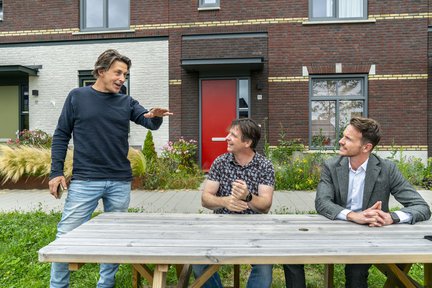
Without NL Greenlabel, this would not have been possible, says Robert-Jan van Gerven. He is one of the Heijmans people who worked on the transformation with Lodewijk Hoekstra and Steven Kamerling's organisation. NL Greenlabel helps local authorities and developers create a measurably sustainable living environment. Lodewijk, known for Dutch television programmes De Grote Tuinverbouwing (the big garden build) and Lodewijks Groene Geluk (Lodewijk’s green happiness), saw that his sector, gardening and landscaping, could play a significant role in the fight against climate change. So in 2012 he and Nico Wissing launched an organisation that develops assessment tools for spatial plans that are now used by all kinds of public sector bodies, designers and the construction industry. Together with Robert-Jan, NL Greenlabel formulated nine steps to make the Land van Dico neighbourhood resistant to heat stress, drought and extreme rainfall, and healthier for both people and animals.
Five years later, Lodewijk and Steven are back in Uden and full of admiration for the result. “Nice little wild garden you have there!”, Lodewijk calls out to a local resident. “All for the bees,” the resident calls back. The walk takes them along streets that drain surplus rainwater to lower-lying lawns with young trees, shrubs and flowers. Then past a large playing field with an almost hundred-year-old oak tree surrounded by iron wort, rowan, shadbushes, hazels and other native plants.
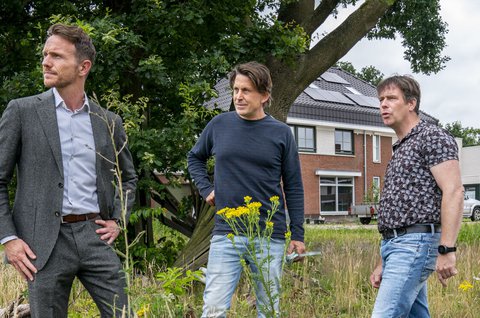
These deeper areas combine a number of functions, Steven explains. “At first, the playground, planting areas and water storage were separate zones. Other opportunities we saw included returning the timber from uprooted trees in the form of locally made benches and laying permeable paving in the parking areas. Most important was the extra-deep soil remediation, allowing people to eat vegetables from their own gardens with peace of mind.”
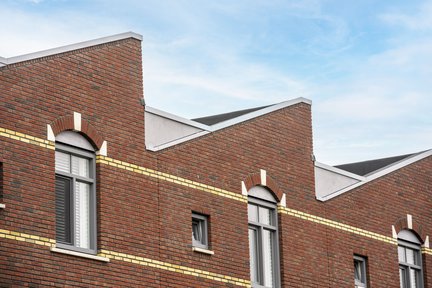
Robert-Jan saw immediately that these suggestions could improve the neighbourhood design and make it more attractive to future buyers. Not exactly an unnecessary luxury in the difficult housing market of that time. “However, the incorporation of the steps did give me and my colleagues a lot of headaches. The plans were already far advanced, so we had to ask ourselves what we could and could not do, would we earn it back and how could we get the stakeholders on board? Fortunately, the first presentation with the extra steps managed to convince the Maashorst municipality and they went along with us.”
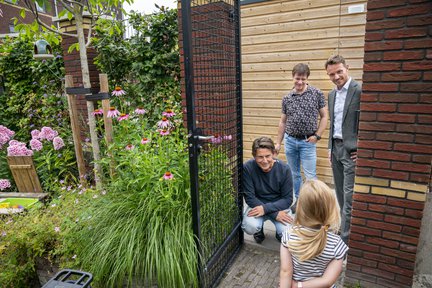
Steven knows all too well that NL Greenlabel is a useful partner in the development process. “As an independent party, we can ask critical questions of both Heijmans and the municipality, such as whether the knowledge for sustainable management has been safeguarded for the future.” Sometimes it takes a while to get his broad view of a plan adopted: “We emphasise every aspect of sustainability: material choices, type of lighting, but also the early involvement of residents. That can feel like a thick package of measures for municipalities and developers.” Ultimately, it is the learning effect that counts, says Steven. “If you work with us a few times and understand why the steps are necessary, it gets easier and easier. Then sustainability becomes self-evident and the new norm.”
“The more often you work with NL Greenlabel, the more self-evident sustainability becomes.”
Lodewijk feels that a lot has been achieved at Heijmans since their first collaboration in 2016 (in the Hooghkamer neighbourhood of Voorhout - ed). “Nature-inclusive thinking and acting is not something an organisation can do at the drop of a hat. It takes time. What I can say is that NL Greenlabel was the sap flow that helped make your property development arm more sustainable. The fact that sustainability is a form of value creation that you include at the start of an area development is now in the DNA of many Heijmans employees. Sometimes they sound like foresters when they proudly tell you how much nature they’ve created! It is so brilliant to see how Heijmans has taken ownership of the tools and knowledge we brought in and are now using them independently.”
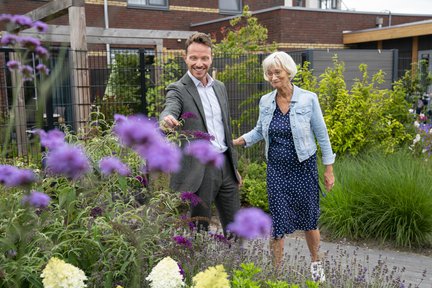
We land in the communal courtyard garden of the neighbourhood's first phase, where residents are serving coffee and biscuits and Lodewijk is bombarded with practical gardening questions. Robert-Jan agrees with Lodewijk's story. “Before our collaboration, I knew all about the hard side of sustainability, such as energy, insulation, solar panels... Climate adaptation and biodiversity were new terms for me. How to make this commercially attractive to home buyers was a matter of trial and error. We produced exceptionally good visuals and, above all, talked about it a lot. Also in regional and local media. The more we talked about it, the more confident people became.”
Now Robert-Jan is benefiting from his new-found knowledge, because more and more municipalities are demanding climate-adaptive and nature-inclusive built neighbourhoods. “In a green environment you live healthier and live longer. It’s scientifically proven.” He also applies the insights in his own life: “My new house has a deep, slightly wild garden. So I’m not going to do too much to that!” Does he have any lessons for his colleagues? “Make sure ecologists or NL Greenlabel are at the table when you first put pen to paper. Don't think after a year and a half of development: ‘we still need a bit of nature’.”
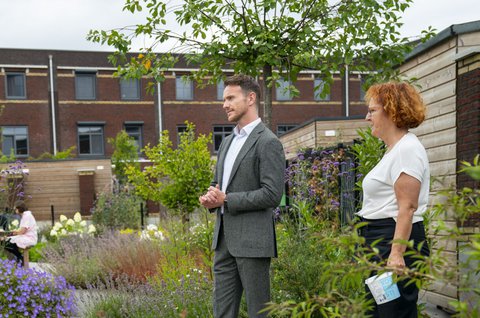
While the public space in Land van Dico contributes to vital urban nature, Lodewijk sees that many private gardens are what he calls quite ‘petrified’. Maintaining the green garden dividers installed by Heijmans is also a challenge, Robert-Jan notes. In some places in the neighbourhood, these have been replaced by steel fences or even artificial greenery. Apparently because the beech hedges “didn't grow and close up fast enough”, which meant that residents lost some of their privacy. “Well, a beech hedge is living material and needs time to mature, around three to five years," sighs Lodewijk. The same goes for the wadis laid out in the later phases of the neighbourhood. Give the greenery time.”
Robert-Jan agrees that Heijmans needs to make an even greater effort to inform and inspire residents. For example, Heijmans had the director of the Gardens of Appeltern, Ben van Ooijen, come along for the last group of Dico house buyers. “Like a stand-up comedian, he got everyone laughing. But he also explained why it’s necessary to have greenery around you. People need to know why they are doing it.”
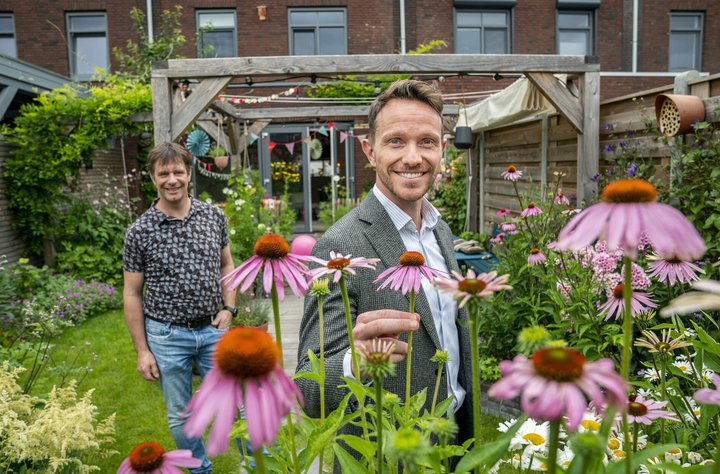
For Heijmans, NL Greenlabel is more than just an assessor. “They are a full-fledged sparring partner in sustainability,” says Robert -Jan. “And as a result, a client looks at Heijmans differently; not as just another developer who goes for their own returns. They see that we really have the best interests of the place at heart. And that we don’t just leave after completion, but commit to the area by keeping five years of management in our own hands.”
Because NL Greenlabel does spot checks in Land van Dico after three and five years, when the planting is well rooted, good management is key. Steven: “By keeping ownership of the public spaces, Heijmans is showing that they stand for a certain kind of management. That serves as a basis for the takeover by the municipality.”
And the ambitions of NL Greenlabel? “Methodology development and becoming a leading player in the lobby for nature-inclusive building,” says Steven. Lodewijk: “Ultimately, we want to be able to wind up our organisation, once sustainable working is the standard.”